The Consequences of Idling a Charter Bus and How to Avoid Them
Any time the engine is on but your vehicle isn’t moving, you’re idling. Sometimes idling is inevitable—you can’t avoid it when you’re stuck in traffic. But eliminating unnecessary idling, such as idling in parking spots or at pick-up locations, is one of the quickest, easiest ways to help the environment. And since a single bus produces more emissions than a single car, cutting down on idling is especially critical for public buses, school buses, and private charter buses.
Idling comes with unpleasant consequences most people may not even think about. In addition to causing air pollution, it can negatively affect people’s health, waste fuel, and cause excessive wear to bus engines. National Charter Bus has compiled a list of some of the consequences of idling, as well as some strategies that charter bus companies and drivers can adopt to reduce the practice. Give us a call at 1-844-755-0510 if you’d like to learn more about how charter buses can offer a safe, green way to travel, and keep reading to discover why unnecessary idling is a problem and how bus companies can solve it.
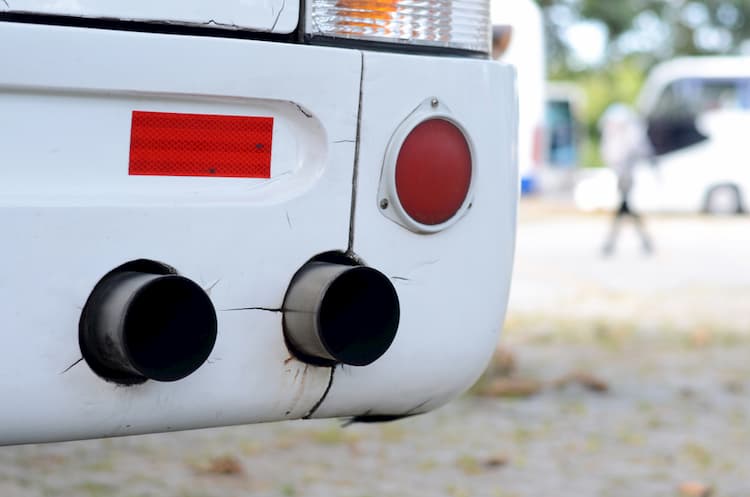
Consequences of Idling
1. It pollutes the air.
According to the National Conference of State Legislatures, idling in the U.S. sends an estimated 6 billion gallons of fuel exhaust into the air each year. This exhaust contains carbon monoxide, nitrogen oxides, and particulate matter that contribute to ozone depletion, acid rain, and climate change.
Some drivers idle because they worry that turning off the bus and restarting it will cause more emissions than idling will. But according to the Environmental Protection Agency’s National Idle Reduction Campaign, idling a bus for more than 3 minutes emits more particulate matter than restarting. The emissions from restarting also contain less carbon monoxide and nitrogen oxides than the emissions from idling for 10 minutes.
Reducing idling is especially important because fuel exhaust doesn’t just enter the air. It can also seep into the bus cabin and into nearby buildings through air intakes, doors and windows. And once it gets there, it can seep into people’s lungs, which brings us to the next consequence of idling.
2. It negatively affects people’s health.
The EPA says that particulate matter from exhaust can enter the lungs and heart, causing “premature death, aggravated asthma, and decreased lung function.” The International Agency for Research on Cancer has classified diesel exhaust as carcinogenic, and the National Conference of State Legislatures says that exhaust fumes have been linked to asthma, cancer, and heart disease.
NCSL also cites work by the World Bank and the Health Effects Institute that shows roughly 100,000 people die each year from illnesses related to air pollution–almost 3x the number of people that die in car accidents. Exhaust fumes from idling can be particularly dangerous for children, the elderly, and those who have pre-existing conditions.
If your charter bus company frequently works with schoolchildren or senior citizens, you’ll want to avoid idling as much as possible to keep your passengers safe and healthy.
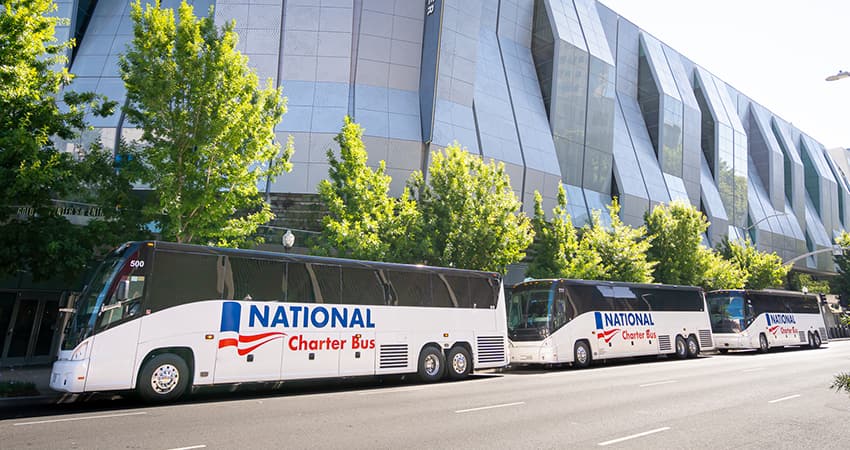
3. It wastes money.
Idling isn’t just bad for the Earth and for people—it’s also bad for your buses and for your wallet. Unnecessary idling uses up gas and causes excessive wear to your engine, forcing you to buy vehicle parts more often.
The EPA has created a Diesel Emissions Quantifier (DEQ) to help you figure out how much gas money you could save each year by eliminating unnecessary idling. The EPA also estimates that running an engine at low or no speed causes 2x more wear to engine parts than driving at regular speeds.
So every time you idle, you’re decreasing how long your vehicle’s parts will last and therefore raising your maintenance costs.
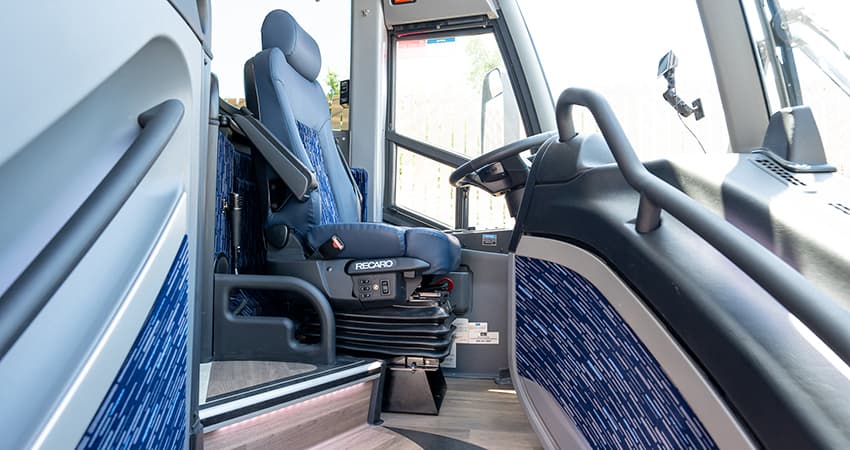
4. It may be illegal.
According to the National Conference of State Legislatures, 23 states and Washington, D.C. limit idling by some or all vehicles. 9 states only allow you to idle for 3-5 minutes, and another 14 states limit idling for vehicles over 10,001 pounds (aka most full-size charter buses).
You’ll need to check state regulations to learn the exact policies in the destination you’re driving to, but in general, you want to limit idling to no more than 3 minutes so you run no risk of legal trouble.
The good news is that limiting idling is completely possible for any bus company. Here are a few tips and strategies.
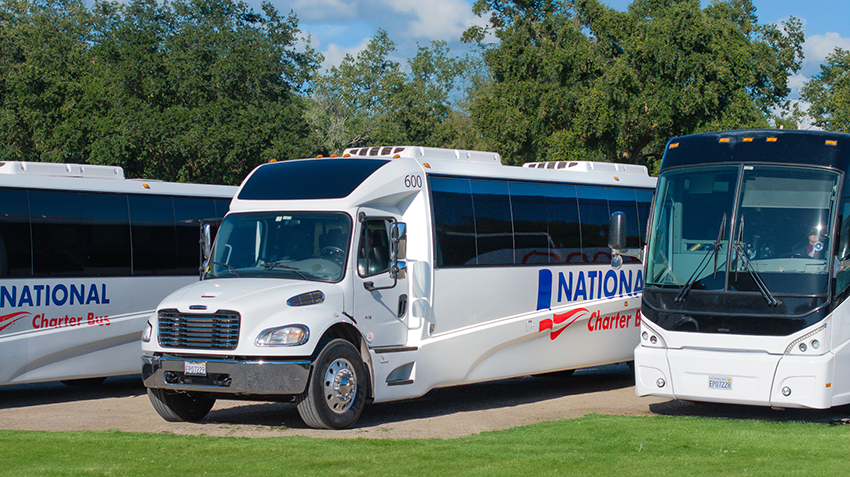
How Bus Providers Can Reduce Idling
1. Establish an idling reduction policy.
One of the easiest ways to reduce idling is to establish clear guidelines for your entire company on when idling is or isn’t okay. The EPA suggests the following basic guidelines as a starting point:
- Buses should typically be moving whenever the engine is on.
- Engines should be turned off quickly after arriving at loading or unloading areas.
- Buses should not be restarted until they are ready to depart.
- Morning warm-up time should be limited to manufacturers’ recommendations (typically less than 5 minutes).
- Bus drivers shouldn’t follow closely behind other buses for long periods of time, since that can lead to more exhaust getting into the bus.
However, since these regulations are very general, you’ll probably want to get more specific with your guidelines. For example, you could try asking bus drivers to idle for no more than 3 minutes to comply with the EPA’s recommendations and to give them a specific time limit. Which brings us to our next suggestion.
2. Educate (and celebrate!) drivers.
Drivers play the most important role in reducing idling. You can implement all the policies you want, but if your drivers don’t understand and follow them, those policies won’t do much. Hold a training session for all of your drivers about idling, or incorporate idling reduction into training events you already have planned. During training, make sure you explain why idling is harmful so drivers understand the recommendations and don’t feel like you’re just giving them arbitrary rules.
You may also want to discuss common scenarios where unnecessary idling occurs. Some drivers don’t stop the bus for loading and unloading because they assume it won’t take very long. But when you have a large group who may need to store their luggage or do a headcount once they get onboard, you’ll quickly run above that 3-minute limit.
You’ll also want to recognize drivers who have successfully reduced idling. If you have an onboard vehicle tracking system, you may be able to use that to see when drivers have cut down on their idling time. Give drivers rewards when they reduce their idling time by a certain percentage, or order take-out for everyone when the entire team has successfully reduced their idling time.
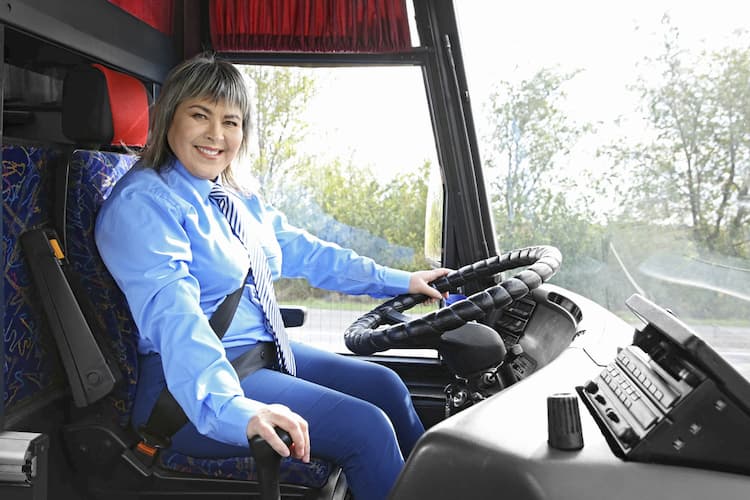
3. Update your vehicles regularly.
Newer buses produce fewer and less dangerous emissions than older ones. That means even when they’re forced to idle, like in traffic, newer buses are safer for the environment and for passengers. Consider replacing the oldest buses in your fleet with newer models whenever it’s financially feasible for you to do so.
Of course, you can’t replace all of your buses. For buses that you’ll be keeping for at least a few more years, consider adding pollution controls or idling reduction technology, like direct-fired heaters, auxiliary power units (APUs), and battery-powered units. Though mainly used by long-haul truck drivers to keep heat, air-conditioning or lights running when the engine is off, these technologies could also help out charter bus drivers who have to spend a long time waiting in the bus.
Even if your fleet doesn’t need idling reduction technology, you can still cut down on the damage caused by idling by keeping your buses well-maintained. The more outdated a bus’s parts are, the more emissions it’s likely to produce. A well-maintained bus may not be quite as energy-efficient as a newer one, but it’ll be close.
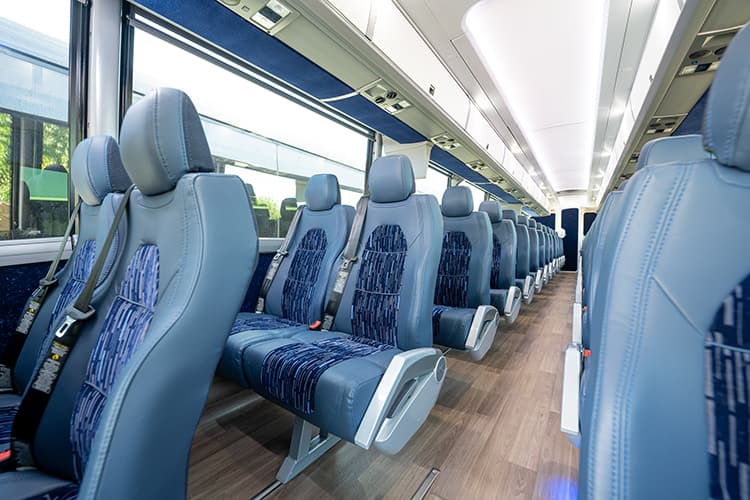
How Bus Passengers Can Reduce Idling
1. Ask your bus company if they have a policy on idling.
Let the bus company you’re booking through know that reducing the amount of exhaust produced by your trip is important to you, and ask if they have a clear policy that prevents unnecessary idling. This is an especially good step to take if you’re traveling with a group of children or senior citizens who are more vulnerable to the damage from exhaust fumes.
2. Let your driver know it’s okay to turn off the engine if the bus will be still for more than 3 minutes.
Some drivers let the bus idle because they’re worried customers won’t like the heating or air-conditioning temporarily turning off (assuming the bus doesn’t have idling reduction technology). But most of the time, the bus cabin will easily maintain a comfortable temperature for the time it takes to load and unload.
Unless it’s extremely hot or extremely cold during your trip, let your driver know you’d like for them to turn off the bus anytime they’re stopped for more than 3 minutes. Having your permission will let your driver reduce idling without worrying you’ll react badly.
National Charter Bus Wants to Help You Go Green
Charter buses produce fewer emissions than planes, and one charter bus can hold up to 56 people, which takes multiple personal vehicles off the road. This combination means that charter buses can be a relatively green way to travel. However, bigger vehicles still produce a large amount of damaging emissions. Cutting down on idling helps you reduce these unnecessary emissions and protect your charter buses, your passengers, and your environment.
If you want to learn more about what makes charter buses a safe and increasingly green option for group travel, call National Charter Bus at 1-844-755-0510. We’re always striving to make the group travel experience better for bus company owners, drivers, and passengers, and we’re here 24/7 to answer any questions you may have.
